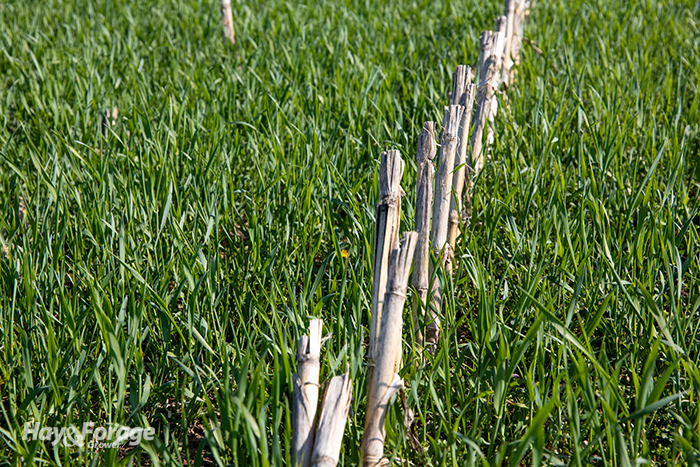
For many years, it seemed winter annual cereal forages fell almost exclusively into the “emergency forage” category, but times have changed. These days, nobody finds the practice of seeding a cereal grain after corn silage as anything unusual — nor should they.
“The four most common winter annuals are rye, triticale, wheat, and barley,” notes Jason Hartschuh, a dairy management and precision livestock specialist with Ohio State University Extension. He points out that barley is the most challenging to grow, as it has less winter survivability if planted late; however, its crude protein (CP) concentration is slightly higher, and it has a slightly faster dry-down rate.
In a three-year, multilocation research study conducted in Ohio, cereal rye had the highest yield when harvested just before the head emerges, averaging 1.92 tons per acre of dry matter. A later harvest — after head emergence — boosted the dry matter yield of triticale the most, with a yield average of 2.81 tons per acre and a top location average of 5 tons per acre. In this study, 50 pounds per acre of spring nitrogen was applied.
“Not only did species affect yield, but it also impacted forage quality,” Hartschuh writes in the Buckeye Dairy News. Barley and wheat had higher CP and total digestible nutrients (TDN) than both triticale and wheat at either harvest timing. Neutral detergent fiber (NDF) concentration was also lower for barley and wheat compared to rye and triticale. On the flip side, the dairy specialist mentions that they lost barley stands to winter injury at all locations one year and at one location during another year.
Variety differences exist
Although there are species differences for winter cereals, varieties within the same species also exhibit significant differences in yield and maturity. “One cereal rye variety in a Penn State University variety trial yielded 3.63 tons per acre of dry matter while another only yielded 2.91 tons per acre,” Hartschuh cites as an example. “The cereal rye varieties also had a 14-day maturity difference between varieties.”
Hartschuh asserts that triticale varieties seem to offer a large range of yields, but they mature in a much tighter window than the cereal rye. The top yielding triticale variety in the Penn State trial had a yield of 4.94 tons per acre with 11.62% CP. The lowest yielding variety yielded 3.29 tons per acre with 11.46% CP. “When selecting varieties, look for agronomic information on winter survival and disease tolerance,” he advises.
Nitrogen is needed
As with any grass crop, nitrogen fertility plays a large role in the performance of winter cereals. During the last two years, Hartschuh has been testing the response of winter rye to various nitrogen and sulfur application rates.
“Compared to not applying nitrogen, our research showed higher yields of 0.27 tons per acre of dry matter in 2022 and 1.5 tons per acre more in 2023 when 20 pounds per acre of nitrogen was applied in the fall at planting after soybeans,” Hartschuh notes. “Fall nitrogen had little effect on forage quality.”
Hartschuh also compared two spring nitrogen rates of 50 and 70 pounds per acre plus 20 pounds per acre of sulfur in the spring. The spring nitrogen rate of 70 pounds per acre did not affect yield compared to 50 pounds per acre in 2022, but more spring nitrogen in 2023 improved yields by 1 ton per acre when sulfur was also applied.
Contrary to fall nitrogen applications, spring-applied nitrogen had a significant impact on CP concentrations. A spring application of 70 pounds per acre increased CP by 0.5 to 2 percentage units over the 50 pounds per acre treatment.
A spring sulfur application of 20 pounds per acre significantly boosted yields in 2023 when 70 pounds per acre of nitrogen was applied. The trials only achieved CP values of 12.3%, and the top-yielding treatment was 6.8 tons per acre of dry matter with 90 pounds per acre of nitrogen applied. This crop removed 270 pounds of nitrogen. “In our trial field without historical manure applications, we need to continue to investigate if crude protein would increase from more nitrogen applied but be careful that the crop doesn’t lodge,” Hartschuh notes.
Full results from the discussed cereal forage trials in this article can be found here.

